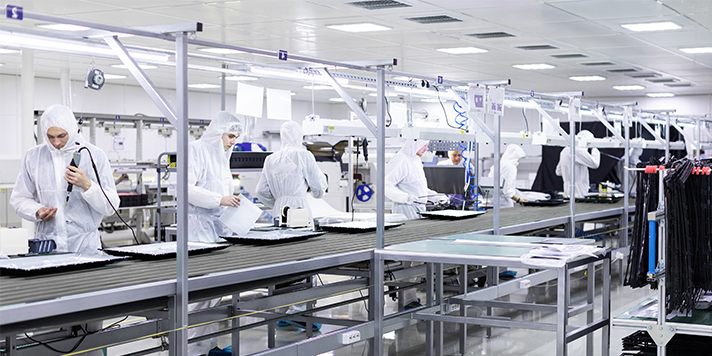Setting up and planning a cleanroom starts with the cleanroom design phase. During this phase, you should consider how the cleanroom will be used, the permitted particle concentration, its location, the manufacturing process requirements, and the cost. It will be necessary for the cleanroom designers to have in-depth conversations with the end-users to ensure that all needs are captured in this phase.
Once the cleanrooms are set up, you will need an experienced group of professionals to maintain the cleanliness and certification of those facilities. Pegasus has been providing comprehensive cleaning services to controlled environments for 15 years. Our staff of highly trained cleaning professionals are familiar with the proper care and cleaning of regulated critical environments.
There are many elements to take into consideration when planning a cleanroom. Along with the practicalities of how much space you have and how much space you need for your equipment, you will also need to consider the following:
- HEPA (High-Efficiency Particulate Air) filters: These filters support contamination control by filtering particles as small as 0.3 microns. Air should be continually circulated through HEPA filters to remove contaminants in the air and supply fresh air for people working in the cleanroom.
- Ventilation: Ventilation is required to maintain air quality and replace process exhaust. This is very energy-intensive, so you need extra space for cooling unit components as well as larger air passageways, noise suppressors, a backup generator, and large intake and exhaust stacks.
- Air pressure: Cleanrooms should have a static pressure that is higher than atmospheric pressure in order to prevent infiltration by the wind. Airlocks also help minimize or prevent changes in pressure that could compromise the process.
- Temperature and humidity: Temperature control means stable and consistent conditions for materials and equipment. Humidity control prevents corrosion and condensation of internal surfaces and eliminates static electricity. These two factors are integral to the function of a cleanroom as well as to the comfort of the people working within it.
- Architecture: In order to maintain consistent airflow throughout the cleanroom, the air needs as unrestricted a path as possible. If the airflow is restricted, the resulting turbulence can then cause the movement of particles, raising the risk of airborne contaminants.

- Measuring equipment: A cleanroom needs to be constantly measured to ensure that factors such as particle count, airflow, humidity, temperature, and cleanliness are at the appropriate levels.
- Electrostatic discharge: Moving air and moving people both create an electrical charge. Electrostatic discharge protective materials should be used to prevent potential damage.
- Lighting: A dimly lit cleanroom won’t do you any favors. You won’t be able to properly clean, so particles will build up, and you may misread instrument displays. Lighting in a cleanroom should be consistent and uniform, with few dark spots.
- Future-proofing: Make sure your cleanroom is as flexible in design as possible to accommodate future expansion, new equipment, or changes to processes.
- Materials used for internal surfaces: In a cleanroom, you cannot use any surface material that may shed particles and contaminate the air. They also need to be resistant to breakdown when cleaned, so they need to be compatible with your cleaning products.
- Showers and laundry facilities: This will depend on your requirements and materials, but you may need to provide showers and laundry facilities for decontamination purposes. This means you will need to consider the plumbing and hazardous waste treatment.
- Hazardous materials: If your cleanroom handles hazardous materials, extra considerations include using a negative air pressure system and the special treatment of waste air and water, as well as personal protection, and separate entrances and exits.
From design to build to maintenance, keeping controlled environments up to standard is a continual process. Pegasus has more than 40 years of experience providing cleaning services and solutions. We can design and implement a maintenance program for all types of controlled environments from ISO 14644 Class I to Class 8.
For guidance on how to keep your cleanroom environment clean and safe, contact us today!






